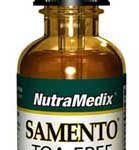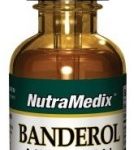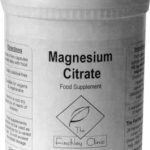There aren’t many people who, at one point or another, haven’t enjoyed time in the countryside; maybe a ramble across a moor, a pleasant stroll through green pastures or possibly a long walk in the woods. Few would credit the idea, though, that should you not live in the country, a visit could leave you ill, with exaggerated symptoms of fatigue; those similar to flu and even arthritic-like symptoms. How can this be so? Two words: Lyme disease.
To be clear, it’s pretty unlikely you’ll contract this illness via just a visit to the countryside; you’d be very unlucky to do so, but it is possible. Indeed, between 2,000 and 3,000 cases of Lyme disease occur in England and Wales every year1. So what is it? Well, Lyme borreliosis – to give its official name – is what happens following a bite from a tick, a creature (a bit like a miniscule spider) whose habitat tends to be woodland and heaths; it’s their bites that transfer the Lyme disease bacteria to an unlucky human victim.
Symptoms
A good indicator you may have been bitten by a tick and contracted the illness is if a large circular rash (erythema migrans; a bit like a dart board’s bull’s eye) appears on your body; it does so usually between three and 30 days after the bite1. Some people may experience more rashes on the body; others – about one in three – may not have a rash at all. The aforementioned flu-like symptoms (tiredness, aches in the muscles and joints, headaches and fever) are fairly common at this stage too.
However, after several weeks the symptoms are likely to worsen and become more serious, as the condition begins to take hold. That said; this may take months or even years to happen. In this case, the likes of joint pain/ swelling (inflammatory arthritis); nervous system issues (numbness, facial muscle paralysis and memory problems); heart issues (heart muscle inflammation – myocarditis – and even heart failure) and brain and spinal cord membrane inflammation (meningitis)1.
Obviously, if diagnosed and caught early enough, hopefully these symptoms won’t be experienced and their severity avoided, but sadly, a number of people with the condition develop long-term symptoms that are reminiscent of chronic fatigue syndrome. Experts aren’t entirely sure why this actually occurs – it’s referred to as post-infectious Lyme disease. However, a line of thinking has it that it may be connected to an overactive immune system1.
Note: no scientific research has yet confirmed it’s possible to pass Lyme disease from one person to another1.
Prevention
Without a Lyme disease vaccine in existence1, the onus then is on people to be sensible when in woodland and heath areas to avoid tick bites. It’s all about not taking risks, so you’re highly advised to:
- Find out if the specific area you’re visiting is known to be tick-infested; if so, you may want to avoid it – you’ll definitely want to war long sleeves and trousers (ideally tucked into your socks)
- Avoid long grass and walk on footpaths in such areas
- Spray insect repellent on your skin that’s exposed
- Always check your body (especially the neck and skin-folds) for ticks
- Check for ticks too on your clothes and your pets, should they have been with you
Treatment
Conventional medical treatment tends to focus on the use of antibiotics – often over a two-to four-week course. Depending on the symptoms’ severity, it could be you’re advised injected (intravenous) antibiotics. Yet, there are two points to be made here. Should the condition have reached post-infectious Lyme disease, a sufferer may want to seek further treatment for the chronic fatigue-like symptoms; plus, for some people, taking a large number of antibiotics does their gastrointestinal and digestive systems no good at all and, thus, can result in regular diarrhoea, while the over-reliance on antibiotics is, of course, a contributory factor to the rise in bacterial infections, as these harmful bacteria are becoming increasingly resistant to antibiotic medication2.
Lyme Disease Supplements
To that end, while anyone would be highly advised to follow the guidance of a medical professional when it comes to Lyme disease treatment, they might also be interested in the natural supplement options on the market that could prove a big help in alleviating some of their symptoms. Such products available from us at The Finchley Clinic (check the ‘Lyme Disease’ section on the website) are:
 Samento – a variety of the Peruvian herb Cat’s claw (a climbing vine native to the Amazon rainforest), which is today used throughout the world to help treat Lyme disease, as well as candida and viral and bacterial infections.
Samento – a variety of the Peruvian herb Cat’s claw (a climbing vine native to the Amazon rainforest), which is today used throughout the world to help treat Lyme disease, as well as candida and viral and bacterial infections.
 Banderol – a potent liquid extract of Banderol bark that may help support the immune system and is frequently used for candida management, microbial defence and Lyme disease treatment.
Banderol – a potent liquid extract of Banderol bark that may help support the immune system and is frequently used for candida management, microbial defence and Lyme disease treatment.
 Magnesium Citrate – long-term Lyme disease sufferers lack magnesium, so this can be a very handy supplement, not least as magnesium’s crucial to the body’s Krebs cycle (the sequence of reactions that sees cells generate energy) and thus reducing fatigue.
Magnesium Citrate – long-term Lyme disease sufferers lack magnesium, so this can be a very handy supplement, not least as magnesium’s crucial to the body’s Krebs cycle (the sequence of reactions that sees cells generate energy) and thus reducing fatigue.
References:
1. ‘Lyme disease’. NHS Choices. http://www.nhs.uk/Conditions/Lyme-disease/Pages/Introduction.aspx. Last reviewed: 31 Mar 2015.
2. Soffar H. ‘Antibiotics advantage and disadvantages’. Online Sciences. http://www.online-sciences.com/health/antibiotics-advantages-and-disadvantages. 13 Jan 2016.
